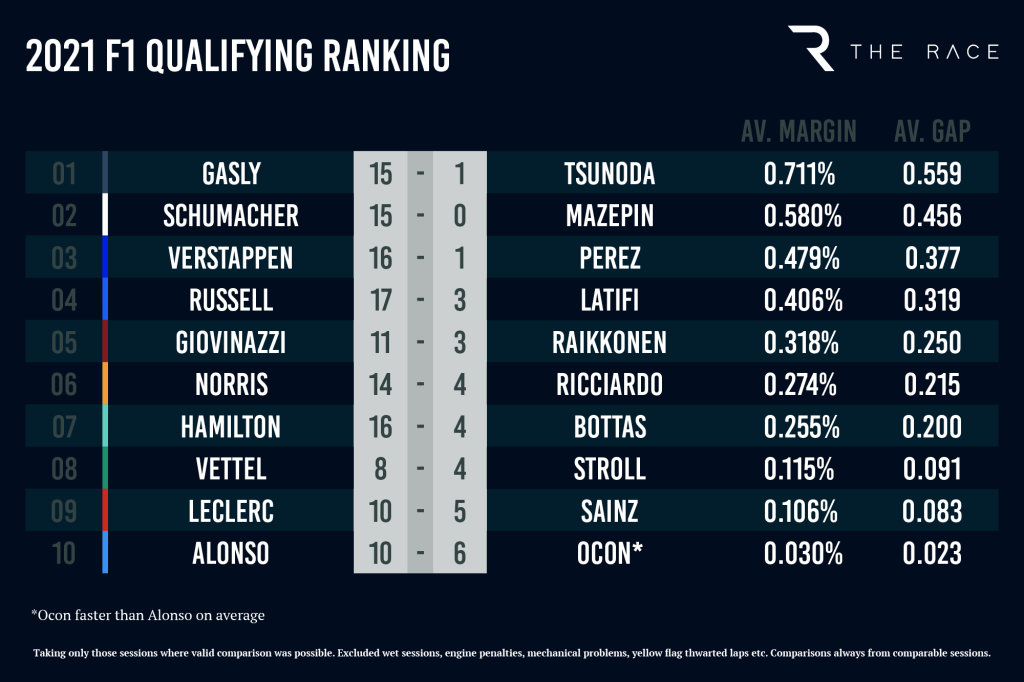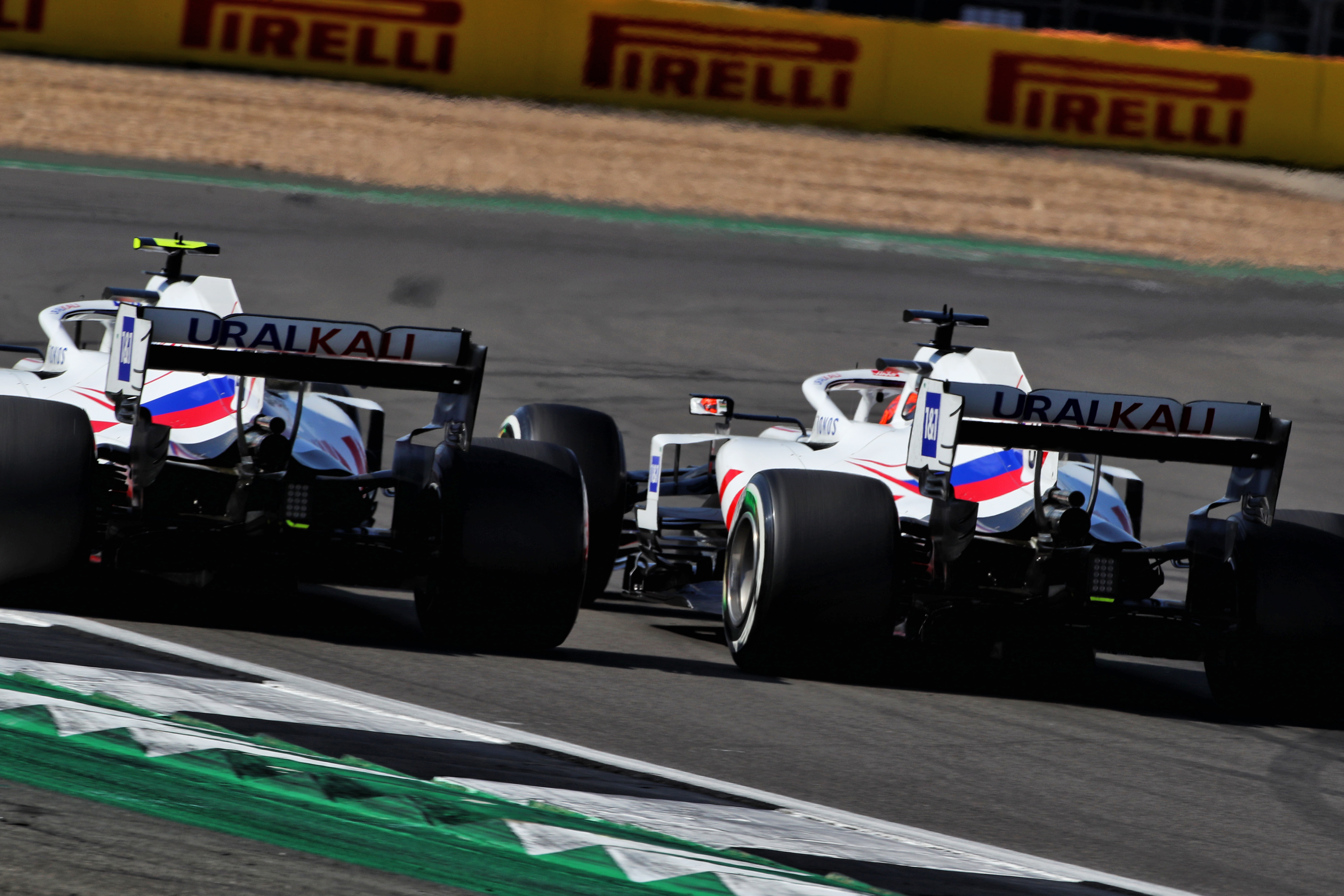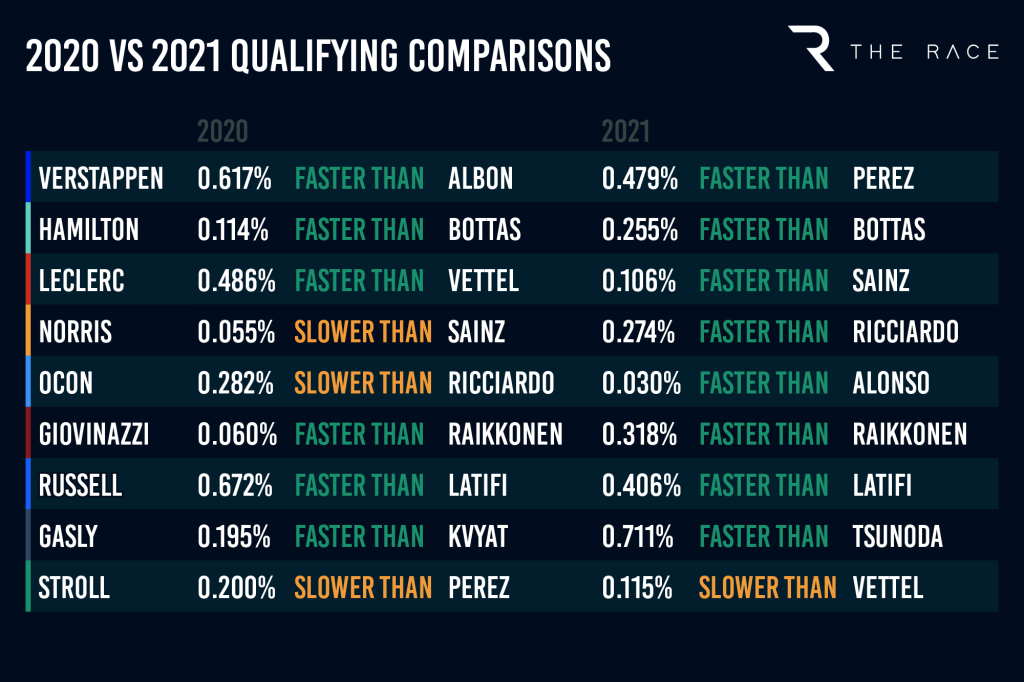Up Next

Here are the qualifying comparisons between team-mates for the 2021 Formula 1 season.
The numbers in the chart below are derived from only those sessions where valid comparison was possible. So it excludes any wet sessions (where the wild track variations make any comparison meaningless), engine penalties, mechanical problems, yellow flag thwarted laps etc.
The comparison is always from comparable sessions so if, for example, one driver makes it through to Q3 but the other doesn’t, only their Q2 times are compared so as to take track evolution out of the equation.
This is why there are differences from team to team in the number of valid comparisons. At Aston Martin for example it was as few as 12 races from 22 where valid comparison could be made (one or the other of their drivers were caught out by yellow or red flags at an inopportune time on many occasions and there were a couple of Lance Stroll crashes in that mix). By contrast, at Mercedes and Williams, there were as many as 20 races where the comparison could be made.
The laptime averages are expressed as a percentage of the fastest qualifying time at each track rather than in minutes and seconds, to avoid being skewed by the different lengths of tracks (ie a 0.2s difference, say, is much bigger on a short lap than on a long one).
QUALIFYING STATS 2021

Obviously, the numbers can only reference a driver relative to their team-mate so cannot give any performance league relative to drivers from other teams. But the biggest advantage of any driver over their team-mate was that of AlphaTauri’s Pierre Gasly over Yuki Tsunoda in terms of the average lap time percentage difference.
As a straight score of how many times a driver out-qualified his team-mate, Mick Schumacher’s 15-0 tally over Nikita Mazepin at Haas was the most dominant. They are listed in the table in the order of the percentage difference.

There is one anomaly arising in using the two different methods of comparison and it is at Alpine where Fernando Alonso outqualified Esteban Ocon 10 times to six but Ocon actually set a slightly faster average laptime.
That can happen when the margins are so small and simply means that when Ocon outqualified Alonso it was by a big enough margin for the average to overcome the fact that Alonso out-qualified him more frequently.
We are talking of a difference here of two-hundredths of a second over the 16 comparable races though.
On the two title contenders, we see Max Verstappen continue his recent big margin of superiority over a team-mate, even one of Sergio Perez’s standing. Lewis Hamilton significantly increased his advantage over Valtteri Bottas.
This in fact was Hamilton’s biggest margin of qualifying superiority over Bottas in their five seasons together. Does it suggest Hamilton was being stretched to new levels by his competition with Verstappen? Or that Bottas performed to a lower level than previously? Such things can only be speculated rather than measured.
Verstappen and Hamilton team-mate comparisons 2017-21
| Verstappen | Hamilton | |
| 2017 | 0.064% faster than Ricciardo | 0.243% faster than Bottas |
| 2018 | 0.121% faster than Ricciardo | 0.148% faster than Bottas |
| 2019 | 0.567% faster than Gasly | 0.151% faster than Bottas |
| 2019 | 0.429% faster than Albon | |
| 2020 | 0.671% faster than Albon | 0.114% faster than Bottas |
| 2021 | 0.479% faster than Perez | 0.255% faster than Bottas |
When looking at the comparison between the 2020 and ‘21 seasons, a few other notable patterns stand out. The struggles of Daniel Ricciardo in adapting to the McLaren are made glaringly obvious. Someone who habitually qualified close to Max Verstappen, and comfortably out-qualified Nico Hulkenberg and Esteban Ocon could not get closer than within 0.274% of Lando Norris.

Carlos Sainz in his first season at Ferrari got to within 0.1% of Charles Leclerc, having been 0.055% faster than Norris in 2020. This was way closer than Sebastian Vettel got to Leclerc in 2020, but was still further adrift than Vettel had been from Leclerc in 2019 (0.023%).
Kimi Raikkonen in what he knew was his final season was much further off Antonio Giovinazzi than had been the case in 2020. Vettel was faster than Stroll at Aston Martin but by a smaller margin than Perez had managed in 2020.





